Abstract
Squirrel monkeys were restrained in a chair equipped with a tail-shock apparatus and a pneumatic bite hose located in front of the subject's face. An aggressive response was recorded when the monkey bit the hose. Initial sessions in which no shocks were delivered produced some biting. When biting during these sessions stabilized at a near-zero level, regularly scheduled shocks were delivered to the monkey's tail, causing a consistently higher rate of biting. After several sessions under these conditions, a punishment phase was introduced in which the previous shock conditions were maintained, and every bite was followed immediately by another, more intense shock. Biting under these conditions was suppressed to a near-zero level. When the punishment contingency was removed, biting increased. With one subject, two additional bite-contingent stimuli were examined: (1) a milder shock that, when made contingent upon hose biting, also suppressed that response, and (2) a contingent tone that had no obvious suppressing or facilitating effect. Individual differences among subjects were extreme, but the effect of bite-contingent shock was consistent. Observations of the subjects during the punishment sessions indicated the existence of certain side effects that resulted from the use of punishment to suppress shock-induced aggression.
Full text
PDF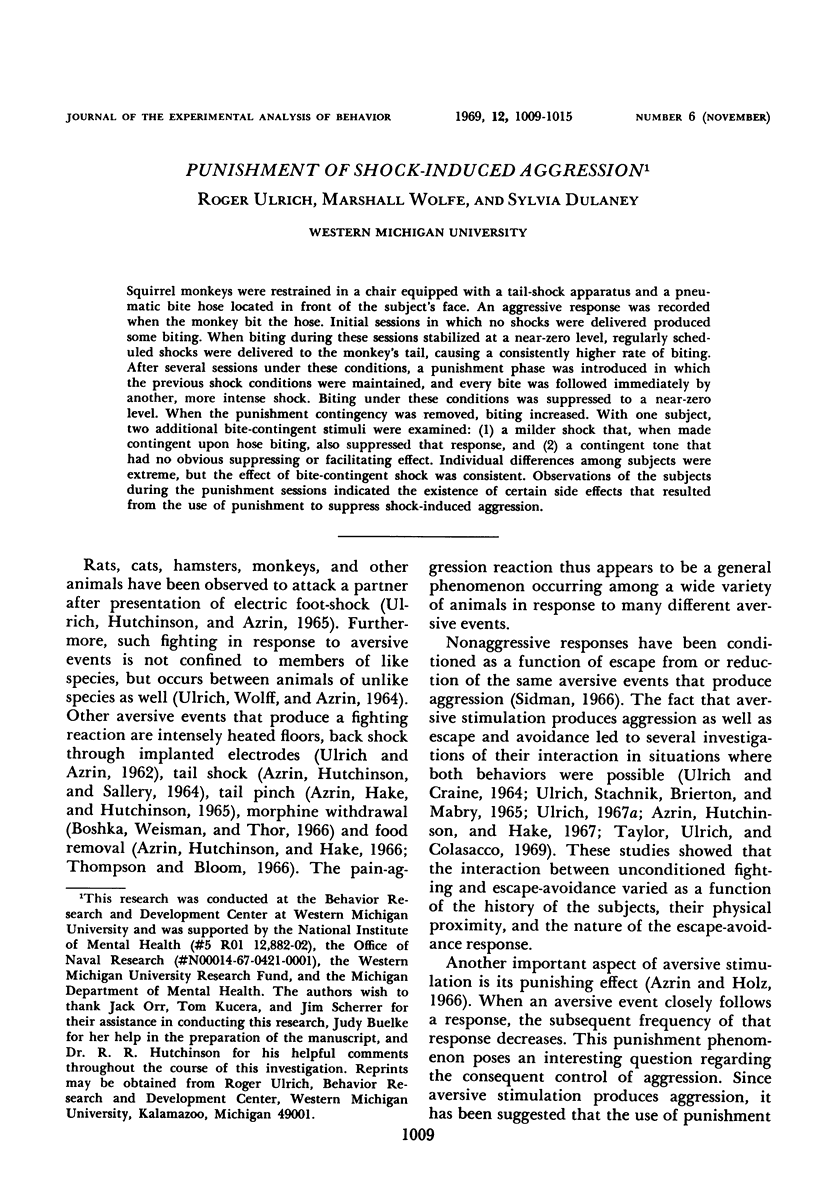

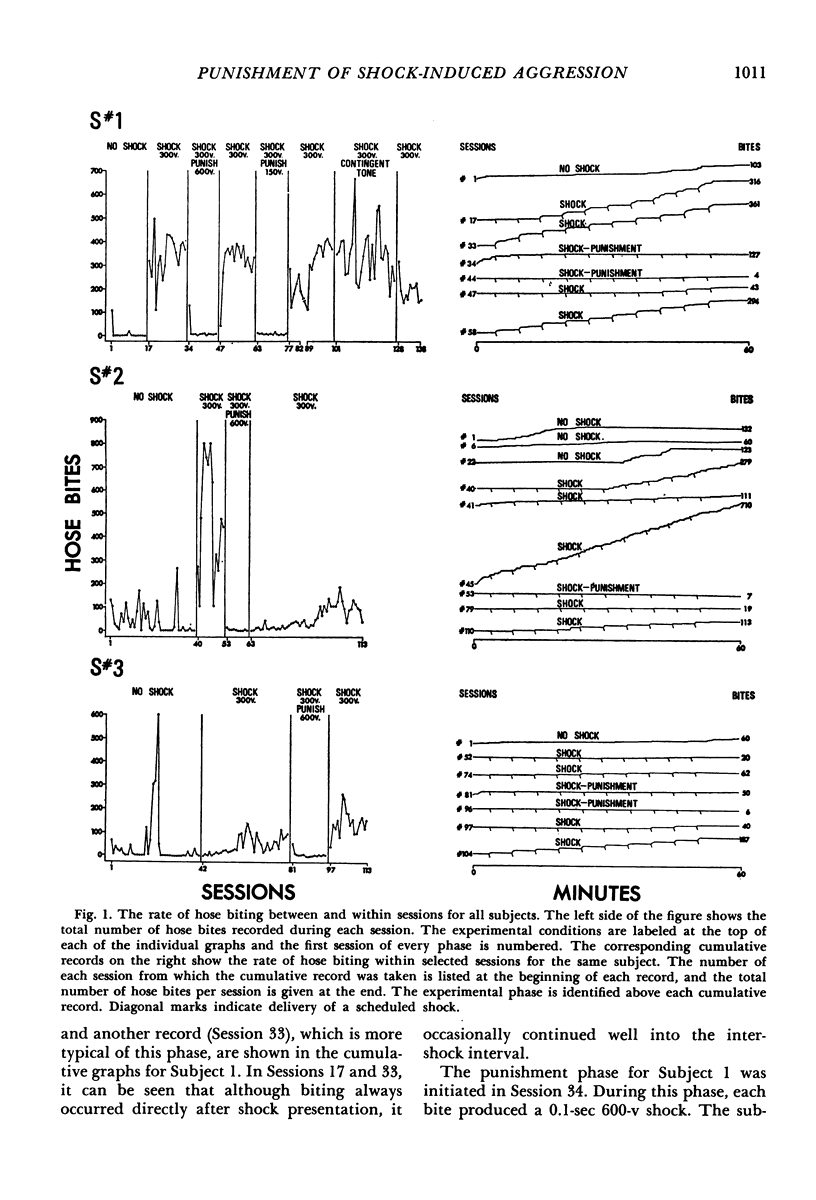
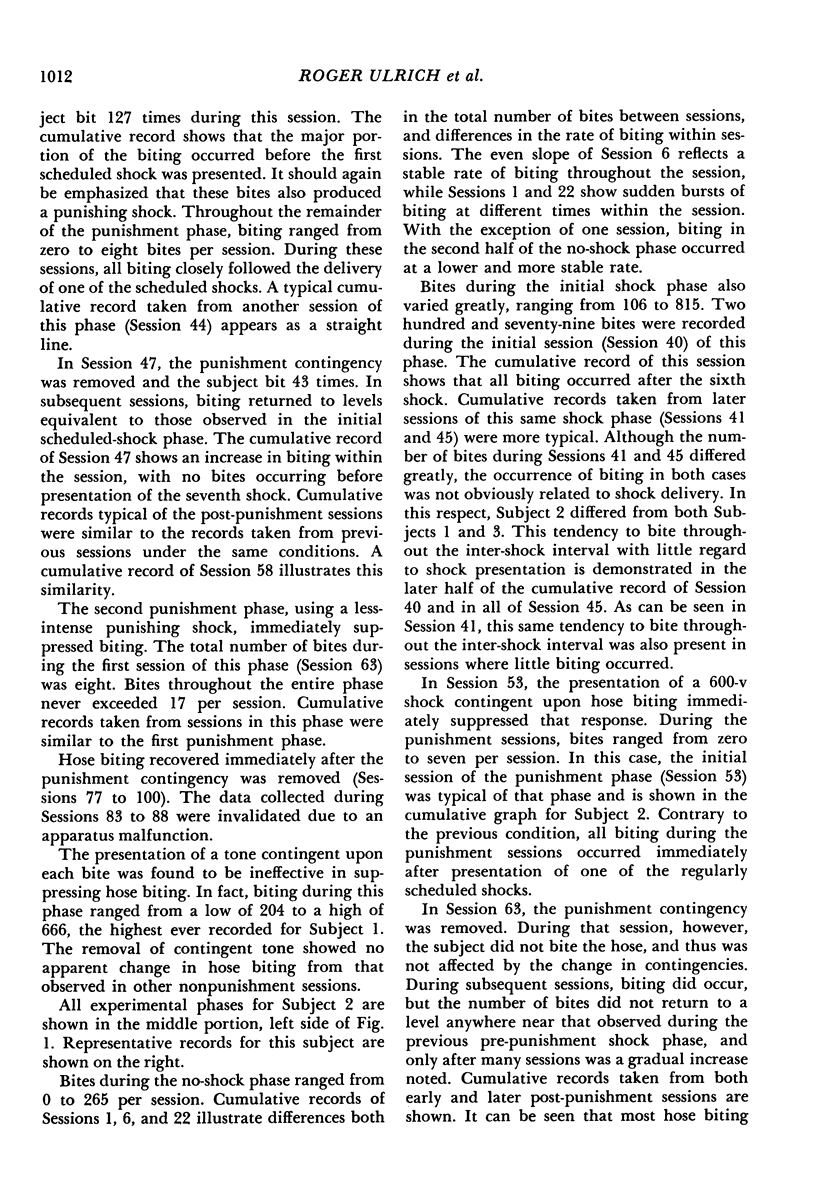
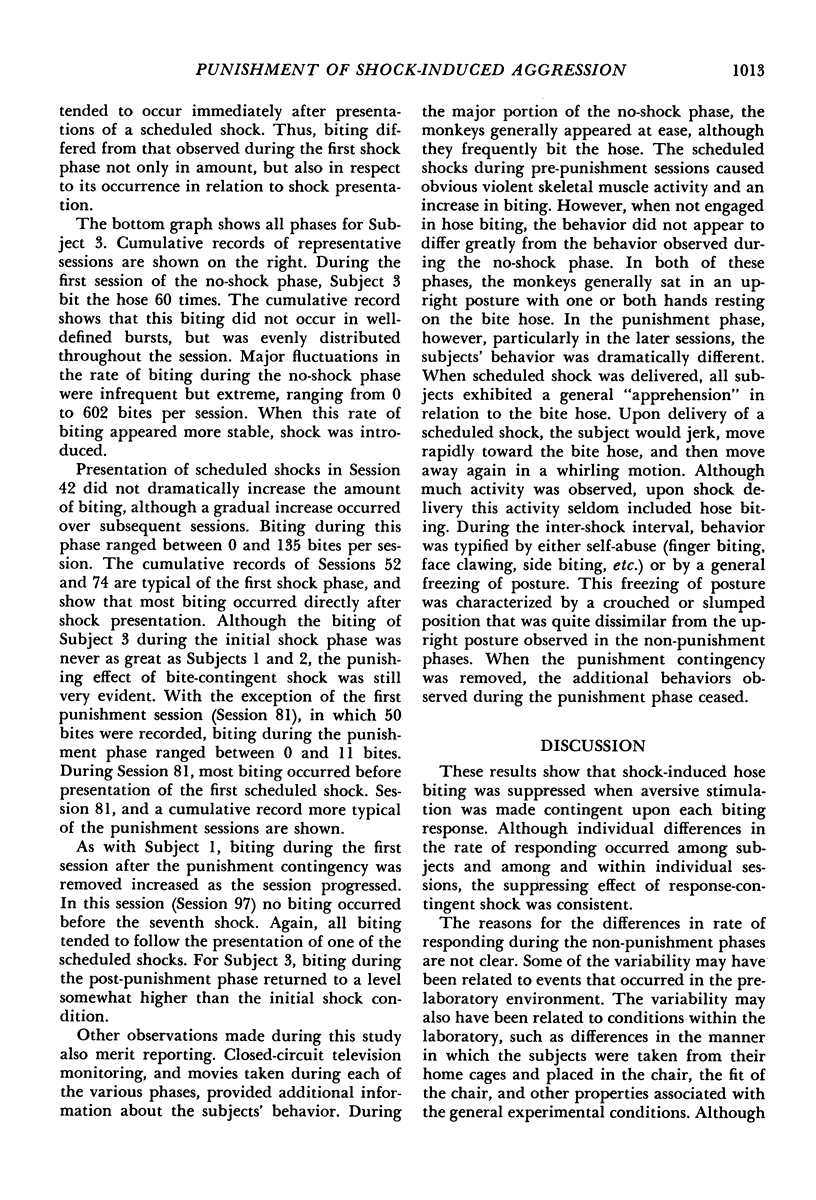
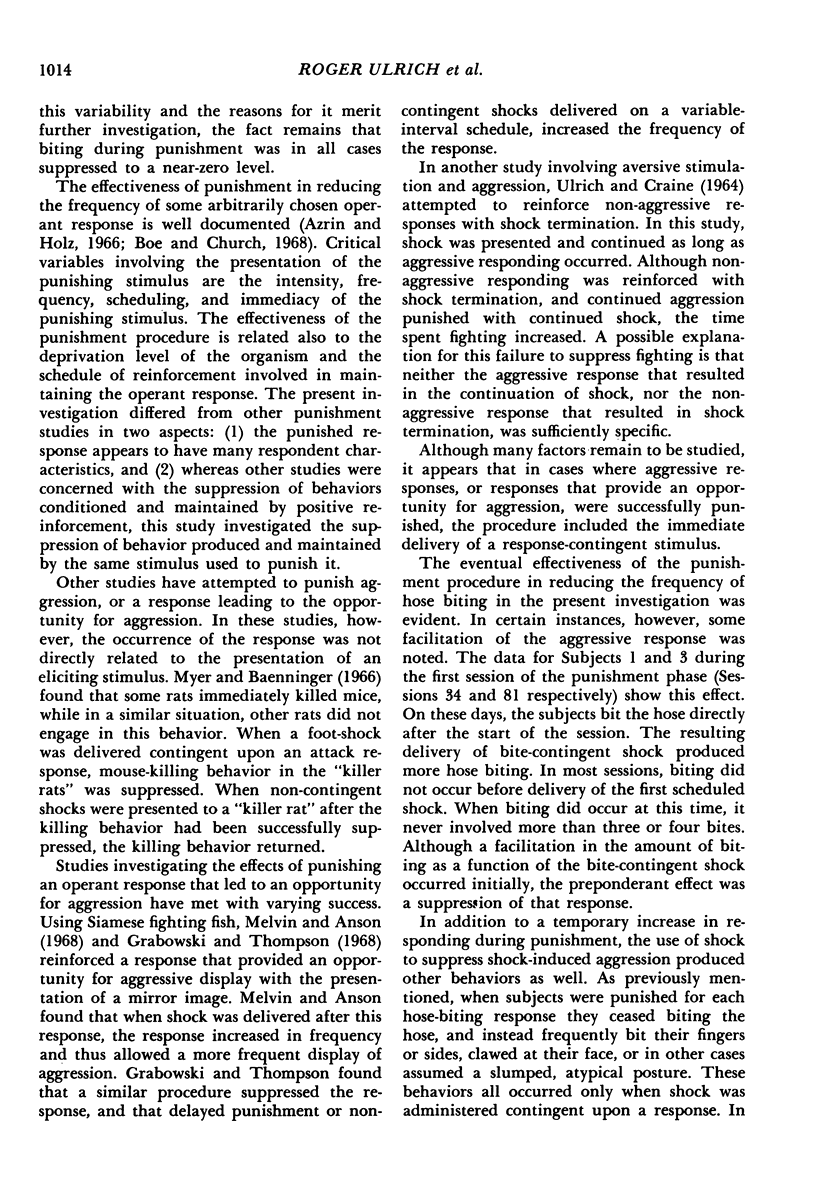
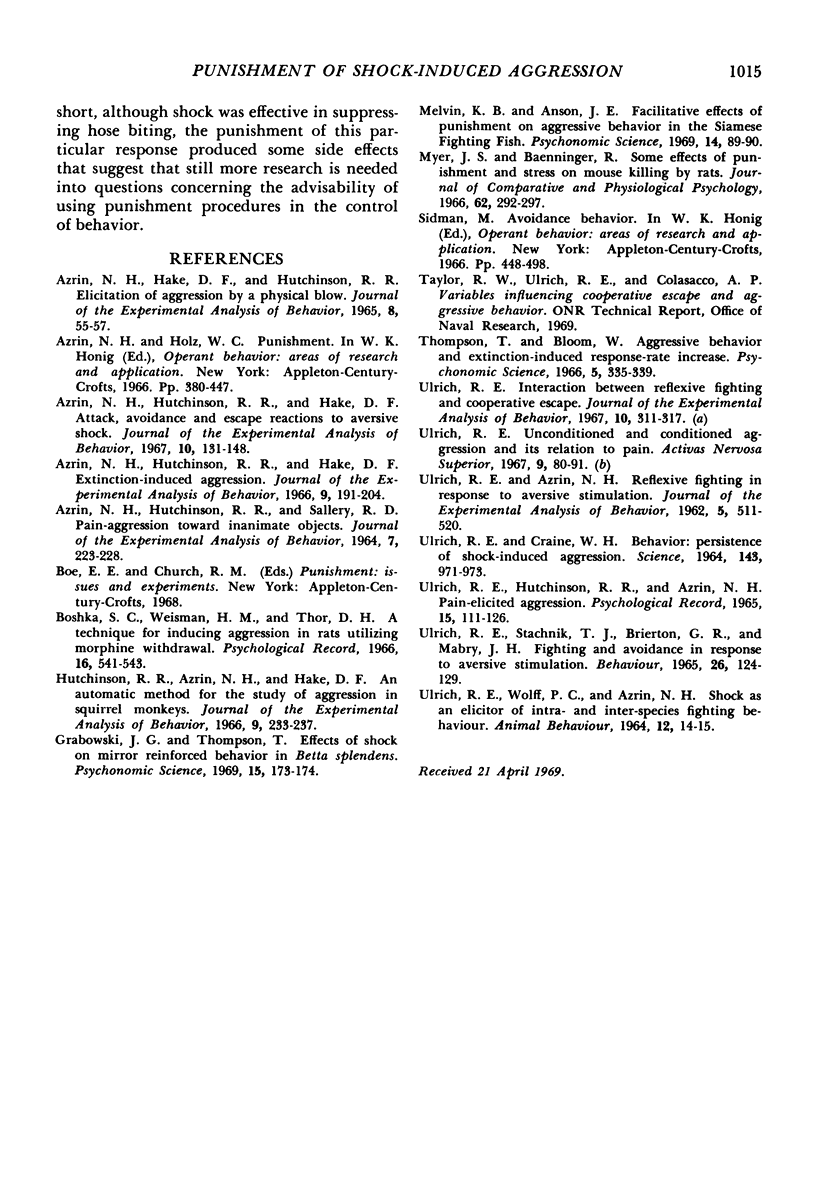
Selected References
These references are in PubMed. This may not be the complete list of references from this article.
- AZRIN N. H., HAKE D. F., HUTCHINSON R. R. ELICITATION OF AGGRESSION BY A PHYSICAL BLOW. J Exp Anal Behav. 1965 Jan;8:55–57. doi: 10.1901/jeab.1965.8-55. [DOI] [PMC free article] [PubMed] [Google Scholar]
- AZRIN N. H., HUTCHINSON R. R., SALLERY R. D. PAIN-AGGRESSION TOWARD INANIMATE OBJECTS. J Exp Anal Behav. 1964 May;7:223–228. doi: 10.1901/jeab.1964.7-223. [DOI] [PMC free article] [PubMed] [Google Scholar]
- Azrin N. H., Hutchinson R. R., Hake D. F. Attack, avoidance, and escape reactions to aversive shock. J Exp Anal Behav. 1967 Mar;10(2):131–148. doi: 10.1901/jeab.1967.10-131. [DOI] [PMC free article] [PubMed] [Google Scholar]
- Azrin N. H., Hutchinson R. R., Hake D. F. Extinction-induced aggression. J Exp Anal Behav. 1966 May;9(3):191–204. doi: 10.1901/jeab.1966.9-191. [DOI] [PMC free article] [PubMed] [Google Scholar]
- Hutchinson R. R., Azrin N. H., Hake D. F. An automatic method for the study of aggression in squirrel monkeys. J Exp Anal Behav. 1966 May;9(3):233–237. doi: 10.1901/jeab.1966.9-233. [DOI] [PMC free article] [PubMed] [Google Scholar]
- Myer J. S., Baenninger R. Some effects of punishment and stress on mouse killing by rats. J Comp Physiol Psychol. 1966 Oct;62(2):292–297. doi: 10.1037/h0023690. [DOI] [PubMed] [Google Scholar]
- ULRICH R. E., AZRIN N. H. Reflexive fighting in response to aversive stimulation. J Exp Anal Behav. 1962 Oct;5:511–520. doi: 10.1901/jeab.1962.5-511. [DOI] [PMC free article] [PubMed] [Google Scholar]
- ULRICH R. E., CRAINE W. H. BEHAVIOR: PERSISTENCE OF SHOCK-INDUCED AGGRESSION. Science. 1964 Feb 28;143(3609):971–973. doi: 10.1126/science.143.3609.971. [DOI] [PubMed] [Google Scholar]
- Ulrich R. E., Stachnik T. J., Brierton G. R., Mabry J. H. Fighting and avoidance in response to aversive stimulation. Behaviour. 1966;26(1):124–129. doi: 10.1163/156853966x00056. [DOI] [PubMed] [Google Scholar]
- Ulrich R. Interaction between reflexive fighting and cooperative escape. J Exp Anal Behav. 1967 May;10(3):311–317. doi: 10.1901/jeab.1967.10-311. [DOI] [PMC free article] [PubMed] [Google Scholar]


